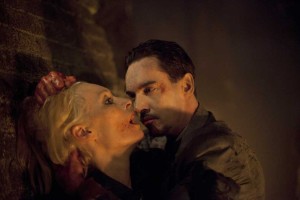
For the entire history of both film and television, there have been numerous visual adaptations of Bram Stoker’s 1897 novel, Dracula. From 1922’s Nosferatu, the F.W. Murnau silent, to 1931’s Dracula, the Universal classic, the early history of film was ridden with Dracula interpretations. Over the succeeding decades, Hammer Films and Columbia Pictures have presented their own takes on the vampire myth. Then, Universal, the home of perhaps the most famous filmed version of the tale, starring Béla Lugosi in 1931 and establishing the tenants for vampiric material, mined their vaults to conjure a new version of the noted story. This time, the medium would be television, and the staples of Dracula stories would be transformed into a new version of the book in the form of a weekly series.
By his own admission, Dracula creator Cole Haddon‘s journey into screenwriting is incredibly unique to say the least. After simultaneously writing graphic novel, The Strange Case Of Mr. Hyde, and Hyde, a screenplay also based on the original novella by Robert Louis Stevenson, Haddon’s next project, the Dracula series, aimed to explore the origins of the infamous count as he arrives in London, falsely posing as an American entrepreneur. In actuality, Dracula’s intentions are to wreak havoc on the people who ruined his life centuries earlier; however, unbeknownst to him he ends up falling hopelessly in love, thus changing the course of his original desires. Dracula stars Golden Globe nominee Jonathan Rhys Meyers as Alexander Grayson, Dracula’s human persona, Thomas Kretschmann as Abraham Van Helsing along with Jessica De Gouw as Mina and also starring Oliver Jackson-Cohen. Dracula was bought by NBCUniversal, and aired on the NBC network for one season. On top of marking Haddon’s debut as a series creator, he is also a writer and co-executive producer on the show. For Haddon, turning this beloved character of which he grew up being a fan into a television series was a dream come true.
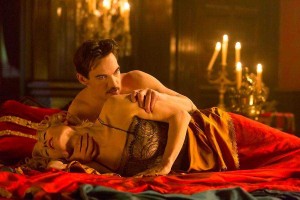 “I remain a giant fan of the novel and the Dracula films that I grew up on such as the Universal monster series and Hammer Films,” Haddon said. “I wanted to hold true to the character dynamics and what was going on under the surface. But I also wanted to bring in Vlad Dracula and use him as inspiration for the origin of Dracula which Bram Stoker never provided. Because I’m a science nut, I added science-fiction to the mix.”
“I remain a giant fan of the novel and the Dracula films that I grew up on such as the Universal monster series and Hammer Films,” Haddon said. “I wanted to hold true to the character dynamics and what was going on under the surface. But I also wanted to bring in Vlad Dracula and use him as inspiration for the origin of Dracula which Bram Stoker never provided. Because I’m a science nut, I added science-fiction to the mix.”
Adding elements of science-fiction to the complexity already associated with Dracula allowed Haddon to be unique and original, all while keeping the appeal that major network producers crave to see from re-imagined, well-known characters. “It began with a conversation with producer Tony Krantz. At the end of the conversation, he brought up Dracula. I love the character and had done all of this research already. I quickly put together a document. Ten months later, after the project was going nowhere, I got a call from Tony that we had sold the show to NBC. It was a strange process that constantly humbles me.”
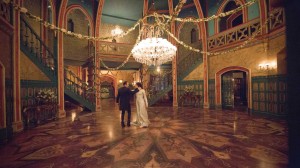 Coming from a journalism background, Haddon knew of the uncertainties and expectations placed on new television projects and tried to prepare himself for this. Thankfully for him, his work on Hyde allowed him to understand of the rigors of being a head-screenwriter/series creator, as he dove head first into the historical world of Dracula. “I did this research about Vlad Tepes [Dracula], the historical figure. Such as his involvement with the Order of the Dragon. It was a crazy fundamentalist organization, which his father also belonged to. A lot of them were religious zealots who wanted to spread a holy war across the world and destroy the Ottomans.”
Coming from a journalism background, Haddon knew of the uncertainties and expectations placed on new television projects and tried to prepare himself for this. Thankfully for him, his work on Hyde allowed him to understand of the rigors of being a head-screenwriter/series creator, as he dove head first into the historical world of Dracula. “I did this research about Vlad Tepes [Dracula], the historical figure. Such as his involvement with the Order of the Dragon. It was a crazy fundamentalist organization, which his father also belonged to. A lot of them were religious zealots who wanted to spread a holy war across the world and destroy the Ottomans.”
With a talent of blending together these historical contexts with basic human motives and desires, Haddon’s Dracula began to take shape, and a central character motivated by revenge and lust was born. “What would happen if Dracula, out of place in this conservative world, rebelled against them?” Haddon questioned. “They would turn him into a vampire as a means to make him suffer agonizingly, but, in the process, they accidentally created their worst enemy.”
Through a well-researched central character such as Dracula, Haddon’s main goal was to connect his viewers with the moral and social dilemmas associated with an equally well-researched environment for Dracula to thrive in. “The setting of the show was always going to be Victorian England,” he said. “That turned out to be the most innovative thing we did – setting the Dracula story in the period it was originally written for. In doing so, we wound up with a social allegory for where we are today, a world mired in conflicted ideologies. I found it interesting that a creature of the night would somehow proffer a more hopeful vision of the future – to show people the light though ultimately fail at it. Clearly history shows he did not succeed.”
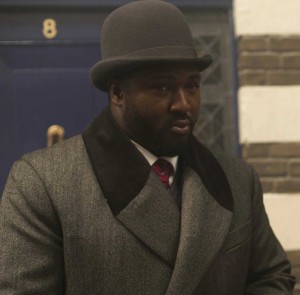 Haddon’s biggest challenge would be to fully re-imagine the character of Dracula in a way that kept his writing fresh and innovative without romanticizing vampires in the same way that pop culture has heavily relied on over the last few years. “There were a lot of little reinventions that seemed much bigger to others than they were for me,” he explained. “Take Renfield. In the novel, he is a devoted manservant. Later, he was a lawyer in the 1931 film version. I decided to hold onto that aspect,” Haddon stated. “Dracula needed someone to be able to talk to about his complicated goals. Making Renfield a brother figure made sense to me. An American black man would be an outsider in England as Dracula had been everywhere he goes. Finding the camaraderie with someone besides Mina, that he loves, seemed important to the story.”
Haddon’s biggest challenge would be to fully re-imagine the character of Dracula in a way that kept his writing fresh and innovative without romanticizing vampires in the same way that pop culture has heavily relied on over the last few years. “There were a lot of little reinventions that seemed much bigger to others than they were for me,” he explained. “Take Renfield. In the novel, he is a devoted manservant. Later, he was a lawyer in the 1931 film version. I decided to hold onto that aspect,” Haddon stated. “Dracula needed someone to be able to talk to about his complicated goals. Making Renfield a brother figure made sense to me. An American black man would be an outsider in England as Dracula had been everywhere he goes. Finding the camaraderie with someone besides Mina, that he loves, seemed important to the story.”
In addition to giving his protagonist a brother figure, Haddon also searched for opportunities to connect audiences to more complex relationships. “We tapped into Lucy Westenra’s (Katie McGrath) inherent lesbianism. Bringing that more to the forefront of the story as a dramatic drive,” said Haddon. “We also utilized Van Helsing as Dracula’s ally working together as a common enemy even though they wanted each other dead. He was such an obvious adversary for Dracula, but to go that route seemed to be a surrender to cliché.”
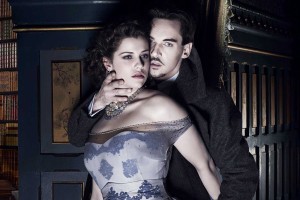 Tapping into the depth of each character seemed like a natural process for Haddon, and he found that by doing so, the show’s story would be able to flourish and evolve over time. “We began with six-pages describing the new origin of Dracula as well as the dynamics for all of the key characters and what sort of conflicts would arise and a kind of broad vision for where the series could go,” said Haddon. “I had some sense where the series would ultimately go and where it would lead up to beyond season one. It was a mission statement about what we would explore and what Dracula’s ultimate goal will be. There were a few bumps along the way, but we always knew what the outcome would be at the end.”
Tapping into the depth of each character seemed like a natural process for Haddon, and he found that by doing so, the show’s story would be able to flourish and evolve over time. “We began with six-pages describing the new origin of Dracula as well as the dynamics for all of the key characters and what sort of conflicts would arise and a kind of broad vision for where the series could go,” said Haddon. “I had some sense where the series would ultimately go and where it would lead up to beyond season one. It was a mission statement about what we would explore and what Dracula’s ultimate goal will be. There were a few bumps along the way, but we always knew what the outcome would be at the end.”
Given a foundation, Haddon delved further into the specifics of the project. “I expanded the story into a proper bible laying out everything for the show, executed simultaneously with the pilot script,” he said. “When that was finished, these were used to attract international interest in the show as well as co-production with Sky Living [a production company] in the U.K. The pilot was a full 60 pages. Because of the specific financing model, they couldn’t just shoot a pilot for the show. It was green lit as a series just off of the script we had for the pilot. Jonathan [Rhys Meyers] came in at the same time as everything aforementioned.”
As someone who re-imagines classic characters for a living, Haddon believes that the criticism writers receive for reinterpreting beloved characters can often times be misguided. “I’ve never understood that criticism about those who try to reinterpret beloved properties, worlds and characters,” said Haddon. “At the end of the day, there are sacred pieces of art that people are never going to remake. Dracula is a classic, but it’s not a definitive moment in human culture. Myths are reinterpreted and always evolve. It’s clearly coming from a love of the material.”
For Haddon, it was imperative that the show’s story be properly introduced to audiences by himself and executive producer Dan Knauf. “The decision was to go to a 10-episode season. We got exactly what we wanted for that,” Haddon said. “The structure is 98% there. I wrote the pilot, episode one, then we broke up the rest of the episodes [amongst the other writers].”
Even as show creator, Haddon has always praised his fellow writers for their efforts towards the project. After five months and five days, Haddon had this to say about the experience: “After a while, it became a comfortable space for people to throw out ideas no matter how crazy. Because of the different qualities of the writers, it really painted a very complicated idea of the show. Some people were strong visualizers, while others came out of a gothic horror background. Me, I wanted to inject style and color with things from the Hammer films [such as with the 1958-1970 Dracula films at the English studio] with a strong social allegory. This was a very interesting collection of people all trying to paint the same picture. The results were much lusher than would have been otherwise.”
With the show being green-lit and in full swing, Haddon knew that some of the hardest work was still ahead, but fortunately, he had a writing team that he could count on. “I was there along with the show runner, Dan Knauf, and my co-executive producer, Harley Peyton. We had a room with five other writers. I came in with an outline for the season. It had the beginning, the middle, the low point,” said Haddon. “We took that apart and decided how the season would take place. Dan, Harley, and I would trade off running the room. We would hash out stories based off of the initial skeleton for the season. Everyone would add their specific strengths. Everyone acquitted themselves brilliantly.”
The distribution of work placed Haddon in the driver’s seat from Dracula’s start until the season’s conclusion. “I wrote episode one and 10. The others got an episode each. They were assigned based on the specific approaches,” explained Haddon. “I think the writer’s room has been the best experience to come out of Dracula. I learned so much from watching the way other writers think and break story. [Writer and co-EP] Harley Peyton’s brain is so damn quick. It’s a race to keep up with how much he understands the story. It’s so exciting to keep up with people like that.”
Television has given many great literary pieces a platform to thrive on in the digital age. As the writers began work on Dracula, they were able to work firsthand with the production team responsible for shooting the show, allowing each writer the chance to critique his own work as it was visually brought to life. “Starting a couple months into the writer’s room, production began in Budapest, Hungary and continued past the writer’s room months. The writers work well together and were turning out work that seemed to make people happy. The base of operations was here as well,” said Haddon. “They shot everything that we wanted. It was a thrill to see our work coming to life. I would say for the most part it was what we were coming up with in the writer’s room. It deviated a little from my ambitions, but we were getting exactly what we sent to them.”
In a business where individual ideas are often manipulated and changed to the point of exhaustion, Haddon believes NBC Studios’ decision to stick to his original screenplay has helped increase viewership and ratings of his project tremendously. “There are so many entities, it is not something that follows any traditional model or allows those involved to make traditional predictions. It’s had a strong following so far. People who have tuned in, seem incredibly committed to the show,” stated Haddon. “On top of that, I also keep up with the British airings of it and interact with fans on Twitter. It certainly helps having Rhys Meyers involved because he has brought a lot of viewers. Thankfully the crazy ambition of the show has kept them.”
For any screenwriter, the first show produced will always have a special place in his or her heart as it sets the bar for all future work and unveils one’s unique talents to the masses. The quality of writing expected from that point on will be forever linked to how one’s arrival on the television scene is perceived. For Haddon, the whole experience has opened doors and allowed him to stake his claim amongst television’s premiere writers. “Getting a series produced that airs on international television is no small feat. I was along for the ride. It certainly helps transform people’s perceptions of you as a writer as well as validates your creativity,” said Haddon. “It’s nice sitting down in a room where people appreciate your work and you’re not holding up the tin cup anymore, begging for work. It opens a ton of doors, and people start offering you projects. Being the creator of something that’s respected and seen as a success to some degree certainly makes people want to work with you. Work begets work.”
Dracula is property of NBCUniversal and is available now on Google Play; a DVD of the entire first season will be released by Universal Studios Home Entertainment on Oct. 14.





